
Why children need to learn math using the abacus:
A PERFECT TOOL FOR THE MIND!
Interesting Facts
Do you know:
Timing is certainly critical!
Measures of brain activity show that during the second half of a child's first year to the first decade of life, the prefrontal cortex, the seat of forethought and logic, develops synapses at a furious rate that it consumes twice as much energy as an adult brain.
“Use it or Lose it"
Lacking appropriate brain stimulations during the development years has a significant negative impact on the cognitive ability of children and correlates with decline in brain performance later in life.
Math Anxiety
Using a calculator might restrict the level of expertise achieved with respect to short-term memory skills for complex arithmetic." Complex arithmetic places special demands on short-term memory skills that simple arithmetic usually does not, because complex arithmetic involves operations such as carrying, borrowing and place keeping. "This is demanding mental juggling for most people's short-term working memory processes.
Math anxiety worsens performance in two ways: First, it leads to avoidance, which leads to lower competence; second, it temporarily inhibits working memory capacity, possibility by failure to inhibit attention to intrusive thoughts.
80% of the world's people have a more developed left brain.
Dr. Roger Sperry of the California Institute of Technology won a Nobel Prize for his work on the functions of the brain's hemispheres.
The right brain has a "high speed, high capacity memory" mechanism.
Neural Pathway
Our brain cells (call Neurons) communicate with each other through an electrochemical network of connections call synapses. The information go into a neuron's body through a thin extension call dendrites (see above picture) and the thicker extension call axons take information away from the cell body.
Understanding Our Brain
Abnormalities in the production or functioning of certain neurotransmitters have been implicated in a number of diseases including Parkinson's disease, amyotrophic lateral sclerosis, and clinical depression.
The human brain consists of some 100 billion interconnected nerve cells with innumerable extensions.
Using EEGs to enhance biofeedback, a person can be taught to monitor and regulate his or her own brain waves.
In the 1970s psychologist M. Barry Sterman taught cats to control their brainwaves in his laboratory.
Brainwave training is an effective intervention for epileptic seizures in humans.
One hundred billion neurons may seem like a lot of nerve cells, but is actually only about 20% of the number we originally start with....
Chronology
1929: Hans Berger, wiring up his son, discovered that the brain generates different electrical frequencies and called the resulting chart "Electroencephalogram" (EEG).
1930: Ivan Petrovich conducted the famous experiments on his dogs. The concept of conditioning is born.
1950: Neal E. Miller of Yale University proved that control of automatic functions (e.g. heart rate) can be taught.
1967: M. Barry Sterman taught his cats to control their brain wave and the resulting subject becomes resistant to epileptic seizures.
1970: Joel Lubar proved that brain wave pattern correction is effective for attention deficit disorder (ADD) and hyperactivity.
1993: University of Vienna researchers Jakob Pietschnig, Martin Voracek and Anton K. Formann presented quite definite findings that suggest no evidence for specific cognitive enhancements through mere listening to Mozart music. Emory University psychologist Scott E. Lilienfeld, who in his recent book "50 Great Myths of Popular Psychology" has already ranked the "Mozart effect" number six.
1998: New York school district incorporated EEG biofeedback into its educational system to treat learning disabilities and hyperactivity.
Four-State of the Brain
Types Of Brain Waves:
BETA: The most rapid is called a beta brain wave pattern, the pattern of normal waking consciousness. Beta is associated with concentration, arousal, alertness, and cognition. At its highest, most rapid levels, though, beta is associated with anxiety, disharmony, and unease.
ALPHA: Relaxed, brain wave activity slows into what is called an alpha brain wave pattern. Alpha patterns vary from deep alpha, a state of deep relaxation often referred to as the "twilight state" between sleep and waking, to the higher end of alpha which is a more focused yet still very relaxed state. Thus it is also referred to as the 'super-learning' state.
THETA: Slower still are theta waves. Theta is best known as the brain wave state of dreaming sleep, but it is also associated with a number of other beneficial states, including increased creativity, some kinds of "super learning," increased memory abilities, and what are called integrative experiences. "Ah-ha!" experiences, where you suddenly "get it," have an insight, are accompanied by bursts of theta waves in your brain.
DELTA: The slowest brain wave pattern is delta, the brain wave pattern of dreamless sleep.
Interesting News
Mathematical knowledge of half a million students from forty-one countries was tested. Of these countries, the test shows that American students performed below average in mathematics. One of the most famous studies of its kind is called Pursuing Excellence, the Third International Mathematics and Science Study.
The mathematical education provided in the United States has proved to be inferior compared to that of other countries. Specifically the Japanese and other Asian educational systems produce more educated mathematics students than the United States. American children tend to score lower on standardized testing than Asian students do.
Many studies have been done by research groups such as the National Center for Education Statistics of the U.S. Department of Education and the International Association for the Evaluation of Educational Achievement showing the differences in teaching methods between the United States and Japan.
Do you know:
A traditional abacus has 2 fives and 5 ones on each column because of 16 based calculation of old Chinese unit of measurement.
A modern abacus has 1 five and 4 ones on each column because of 10 based calculation.


Activating both sides of the brain
Hi-Speed Mental Math is just the beginning
Image Abacus is a method of mental calculation. It is performed on a virtual image of abacus formed in the mind and is based on the principles of abacus calculation. In this case, the abacus is merely a tool, through regular practice of which children are able to visualize and internalize the image of abacus in their mind.
How fast can it be?
By activating both sides of the brain, all students can achieve calculation speed previously only achievable by math geniuses.
As a matter of fact, in Dec. 2000, a first-year student and his 2 sisters had broken 4 Guinness world records with this very same method of calculation.
Read the full story at Taiwan Government's official web site.
How does it benefit my children?
Image Abacus trains students to use the left hemispheres (logical side) to manipulate the virtual abacus (image) on the right hemispheres (abstract side). This unique exercise fosters and strengthens the brain function in the following areas:
• Fosters one's confidence in calculation.
• Develops mental calculation, which is the ultimate resource.
• Provides a sense of achievement as one's proficiency improves.
• Develops the right brain tremendously.
• Leads to greater mental capacity.
• Promotes intuitive thinking.
• Enhances problem solving capability.
• Greatly enhances creativity.
• Improves memory capacity.
• Improves concentration and mental endurance.
Left and right brain thinking
In short, image abacus training will help any child to retain knowledge better and become proficient in any subject, especially math.
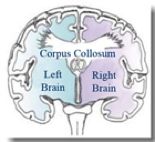
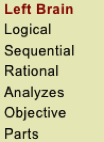
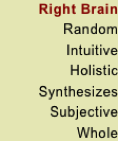
The key to optimal learning capability
Unlock the brain’s best potential
Advance Technologies
Studies have shown that reading and listening programs using advanced computer based technology stimulate brain cell development and enhance 19 brain functions, improving the basis point of one's IQ by 5% to 25%.
Speed Hearing
Speed hearing research was begun by the US Army around 1956. Applying speed hearing as a training course for executives was pioneered by the Japanese in the late 1970's.
Our minds can be trained by overhelming the receptors. Neurologically this is called "use dependent plasticity". The most common experience of this concept for most people is highway driving. After driving at highway speeds for 60- 90 minutes we will find that it is difficult to drive at city speeds. It is because once our brain get used to have information coming at a fast pace, it is actually hard to slow down! ABG applies the same principle by grooming students to listen and comprehend rapid voice interactions.
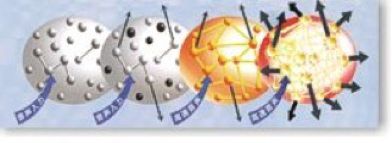
A Brain Exercise Like No Other
By combining Image Abacus and Speed Listening training, we have created a brain exercise like no other. The intensive comprehension and calculation required to complete the task, cause most of the actual information processing to be off-loaded to the right brain for faster processing. With regular training, students will gain unrestricted access to the right hemisphere of their brains. This is like once we learned how to ride a bike, we instinctively were able to balance ourselves on it without having to think about it every time.
High Volume and Higher Speed Communication Between Brain Cells
As we all know, regular weight training will produce more dense muscles for our body. The same is true for our brain. Regular Speed Listening training produces a much denser synapses network (a neural pathway with much more connection points between cells), capable of higher volume and higher speed of communication between brain cells.
Putting It All Together
To make this training possible, we employ custom developed computer aided training systems and speech synthesizers to accurately control the speed (words per minute), duration and level of difficulty of each exercise. These training programs were designed basically on our own "Brain Wave Optimization" EEG biofeedback research. The result is an achievable, progressive program that will benefit each and every one of our students. We guarantee that each student will show improvements in focus and concentration, faster and more intuitive thinking, better memory and of course, incredible or superior math capability.
Brain wave pattern optimization
Biofeedback: The "Little" Breakthrough In Learning
Brain Wave Study
Our brain is an electrochemical organ. When working, different regions of the brain emit different frequencies called brain waves. Research found that brain wave patterns are directly related to our behaviors, capabilities and performances. After decades of measuring brain wave patterns of natural leaders, artists, scientists and creative minds of all walks of life. The optimal pattern call "The Awakened Mind" was released in 1979 by British psycho physiologist and biophysicist C. Maxwell Cade.
Brain Wave Pattern of Peak Performance
Combines the following all at the same time: - the intuitive, empathic radar of the delta waves - the creative inspiration, personal insight, and spiritual awareness of theta waves - the bridging capacity of relaxed, detached, awareness of Alpha waves - the external attention and ability to consciously process thought of Beta waves. This brainwave pattern can be found during "peak experience" or "peak performance", regardless of the content or intention, in all forms of task requiring creativity and high performance. It is not "which" frequency, but "how the frequencies combine", that determines our optimum states of consciousness.
The "Ah-Ha" Wave Pattern The “Ah-ha!" experience -- where we suddenly "get it," gain an insight, or when a great idea suddenly comes to us -- produces a brain wave pattern very similar to the "awakened mind" pattern. This pattern is characterized by the bursts of beta and alpha waves.
When an "ah-ha" experience occurs, an association has been created between the problem requiring resolution and the mass of unconscious learning that is available to the subject. It is possible to train the brain to generate the "ah-ha" pattern

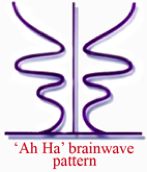
The Super Learning State The super learning state which occurs when alpha and theta waves dominate. The super learning state, which shares some characteristics with peak performance brain wave pattern, occurs when alpha and theta waves dominate. However, in the super learning state the beta wave is reduced. The result is a unique state where the brain can accept a much larger volume of information than is normally possible. This occurs because the normal conscious filter of the mind is by-passed; instead, the knowledge is absorbed directly and in an unfiltered state.
The goal of the mental abacus training is to provide students with control over these brain wave patterns. This control will allow students to access the desirable brain wave pattern for the learning which is required. Employing the core "speed hearing" technique and progressing through a carefully designed series of graduated calculation exercises, students are trained to achieve the optimal state of mind for the task at hand.

Image Abacus and Brain Wave Pattern
The Abacus Brain Gym’s Method
The power of the mental abacus system consists of its manipulation of three key variables: difficulty of the task, task duration, and the speed at which the task must be accomplished. Manipulation of these variables requires sophisticated technology as does measurement of students’ response. Abacus Brain Gym is one of the very few institutions, and unique in North America, in its ability to provide the equipment, training program and instructional support to guide your child through this system. The outcome is that one goes far beyond the ability to perform fast calculation. The lasting effect is the student's acquisition of a tool that will support all future learning experiences.
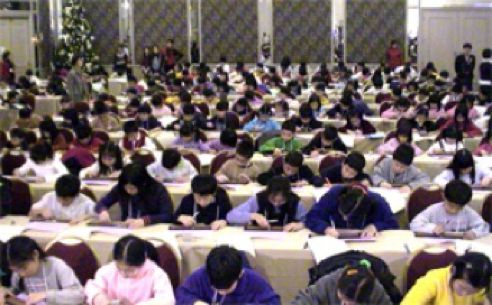
The best skill any child would wish for
Solid math foundation is the key to opportunity
Evaluation of Memory in Abacus Learners.
Published in Indian J Physiol Pharmacol. 2006 Jul-Sep;50(3):225-33)
Department of Physiology, Stanley Medical College and Hospital, Chennai 600 003.
Abacus is a method used by Chinese, Japanese and Koreans to improve mathematical skills. This system has now invaded our country. The improvement in mathematical skills is said to be due to a coordinated functioning of both right and left hemisphere. As learning and memory in any field is achieved by coordinating and analyzing the different sensory inputs, whether an abacus trainee would also improve the short-term memory as a whole was evaluated in our study. 50 children of average IQ between 5 and 12 years from 2 regular schools and 50 from an abacus institute were evaluated for short-term memory before and after a period of one and two years. The memory tests were taken from Wechsler memory scale, Mini mental state examination, Mann - Buitar visual memory screen for objects. The results showed that the abacus learners at the end of one and two years had a better visual and auditory memory when compared to non-abacus learners.
About skilled Abacus Users and the training of intelligence.
Mr. Lin and Mr. Haqits, professors in Osaka Education University, studied abacus users and found that abacus training can help to cultivate and to improve their intelligence. They wrote a thesis to the Journal of British Medical Science. Dr. Sinagwakane, professor of Japan Medical University, Mr. Kawano and Mr. Osisewbi also did some research and made a report to the 68th Conference of Japan Physiology Association in Kyoto.
A Dissertation Submitted for the Dr. Degree in Abacus Study
Associate professor of University of Chicago, Dr.James Stigler, wrote his Doctoral Dissertation about abacus study. He stayed in Taiwan for two years and did research to the students. He gave a test to the students before and after taking abacus lessons. Then he wrote a doctoral dissertation and received his PhD. His major is in Psychology in Human Behavior. Later, he wrote many theses, including the "Mental Abacus - The Effect of Abacus Training on Chinese Children's Mental Calculation".
Japanese~ American Co-operative Study on the Effects on Abacus Education
Dr. Flanagan in University of Maryland and Dr.Biga, a professor in Liuqiu University cooperated to study the achievements of Japanese and American students in mathematics. The result shows that Japanese children's arithmetic scores are higher than American students are; above all, abacus learners are top in every grade.
A Guide to the Experiment on the Effects of Abacus Education
American educators wanted to know why American tend to reject arithmetic. They introduced abacus to the classrooms. Children like to work with the abacus in a concrete way instead of an abstract way. They gradually changed to be fond of studying arithmetic.
Concentration Effects
Decker Avenue School in California did a research for CONCENTRATION after introducing abacus to the children. The study indicated a very good result.
The Particular Teaching Tool
Children like to work with something concretely instead of seating and listening to lectures. Abacus method is good for active attitude toward learning, as pictured in Haslett's and Piaget's theories.
Author: Mr. Kouzi Suzuki, President of English Mental Arithmetic Education Association of Japan
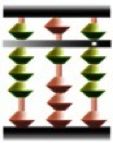
Recent studies have shown that the abacus method of mental calculation is effective in the development of the right brain. At first, this idea was only a hypothesis, but the recent development of high-tech machinery has helped provide tangible research data. In this section, we will present information provided by researchers who study the effects of abacus training.
Evaluation of Memory in Abacus Learners
Abacus is a method used by Chinese, Japanese and Koreans to improve mathematical skills. This system has now invaded our country. The improvement in mathematical skills is said to be due to a coordinated functioning of both right and left hemisphere. As learning and memory in any field is achieved by coordinating and analyzing the different sensory inputs, whether an abacus trainee would also improve the short-term memory as a whole was evaluated in our study. 50 children of average IQ between 5 and 12 years from 2 regular schools and 50 from an abacus institute were evaluated for short-term memory before and after a period of one and two years. The memory tests were taken from Wechsler memory scale, Mini mental state examination, Mann - Buitar visual memory screen for objects. The results showed that the abacus learners at the end of one and two years had a better visual and auditory memory when compared to non-abacus learners.
Using functional magnetic resonance imaging, we compared the neural correlates associated with three mental-operation tasks (numeral, spatial, verbal) among six experts in abacus operations and eight non-experts. In general, there was more involvement of neural correlates for visuospatial processing (e.g., right premotor and parietal areas) for abacus experts during the numeral mental-operation task.
Mental Math: Imaginary Abacus Calculates Strings of Numbers in Seconds
When 11-year-old Priyanshi Somani multiplies strings of 10-digit numbers or finds the square root of a six-digit number, she doesn’t use a calculator or even pencil and paper.
Taiwan Headlines: Kaohsiung Siblings Break Math World Records
A brother and his two sisters from Kaohsiung City shattered four Guinness World Records for arithmetic calculation Saturday, under the extemporaneous testing of Kaohsiung Mayor Frank Hsieh and other officials.
Mathematical Education: A Comparison between Japan and America
The mathematical education provided in the United States has proved to be inferior compared to that of other countries. Specifically the Japanese and other Asian educational systems produce more educated mathematics students than the United States. American children tend to score lower on standardized testing than Asian students do. Many studies have been done by research groups such as the National Center for Education Statistics of the U.S. Department of Education and the International Association for the Evaluation of Educational Achievement showing the differences in teaching methods between the United States and Japan. The teaching styles and the cultural differences can account for the gap in performance.
A collection of useful links:
Mystery of the Bead: An Abacus Manual
Collection of all kinds of abaci with wonderful pictures and descriptions.
Kids Rank with Adults at Japan Abacus Championship
Click here for Testimonials!

Why Abacus/Soroban is still relevant today?
Why Abacus Mental Math
Speed Hearing Calculation
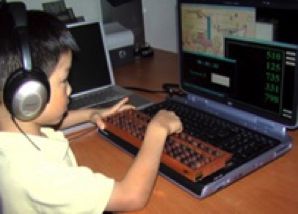
Millions of children around the world are taking
the abacus training today and here is why
A proven track record through history and recent neuro-scientific research have positively confirmed the effectiveness of the abacus training. Calculating on an ancient abacus that utilizes a hands-on, kid- friendly and multiple-intelligence approach has proven benefits to enhance the development of human brain. The mental abacus method has a clear advantage to keep the mind vibrant and to ease the journey of learning with WHOLE BRAIN power.
Abacus instruction works because it is a unique combination of classic and contemporary methods, tools, and research. The goal of the program is to teach students how to mentally calculate while simultaneously enhancing and improving the brain.
Abacus + Brain + Software + Great Instructor = HIGH SPEED MENTAL MATH! WOW!
The BRAIN is wired for challenge and can function as a SUPER COMPUTER. Information travels across the nervous system at a speed of over 200 mph. How's that for an information super highway? Yes, we are wired for very complex applications -- just like a computer. Why not use that? Forget calculators. When the hands, both hemispheres of the brain, brain waves, auditory nerves, and memory are in synch, the brain is at its best. It is wired for success. Eureka! Repeating something over and over solidifies a pathway. Brain plasticity proves that parts used are parts engaged and expanded. As the abacus training synchronizes all of these traits, brain cells grow and areas expand. Science proves it.
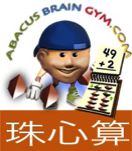
Brain Wave Study
Research on Abacus Training
Useful Links


